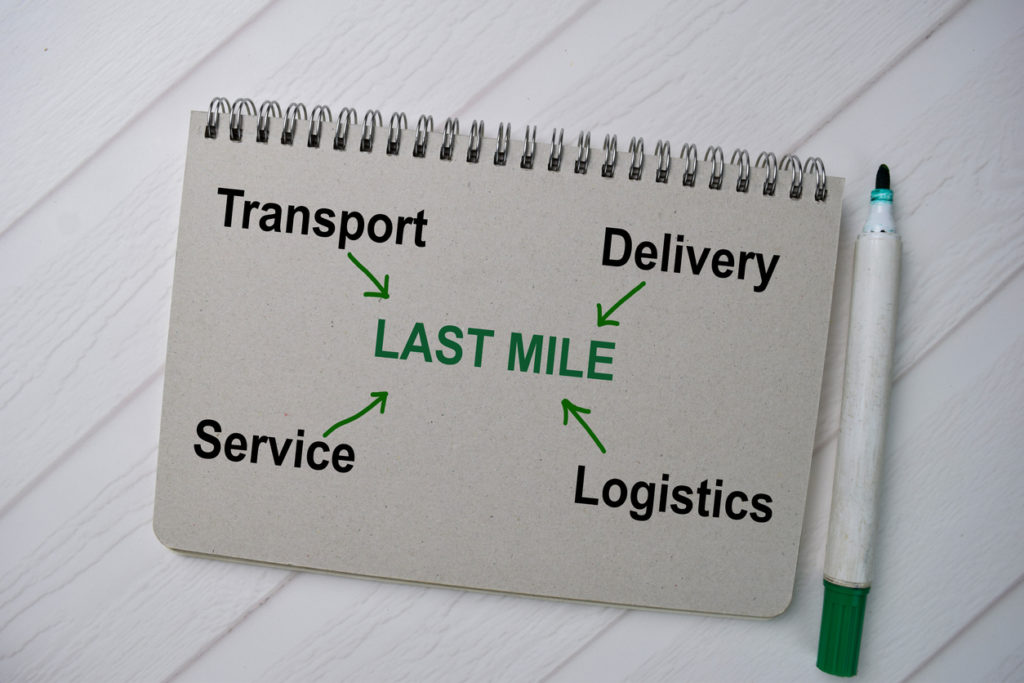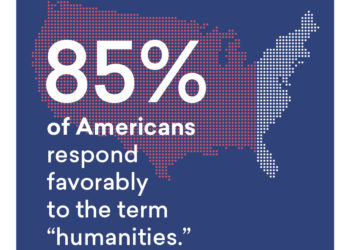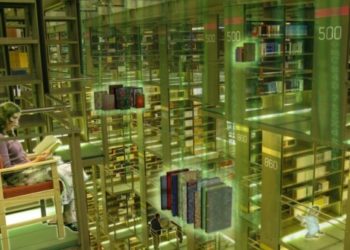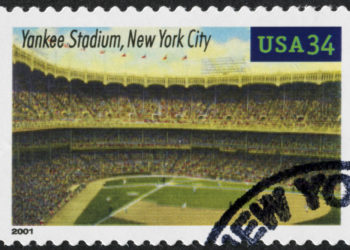Editor’s Note: Today’s post is by Edward Balleisen and Ashton Merck. Edward is Professor History and Public Policy and Vice Provost for Interdisciplinary Studies at Duke University. His administrative duties include supporting collaborative research, pedagogical innovation, and civic engagement across Duke’s ten schools, and cultivating student-centered PhD education. Ashton is a Postdoctoral Research Scholar at North Carolina State University and Associate Editor for H-Business.
We have a “last-mile” problem when it comes to getting digital historical collections into the classroom, akin to the challenge of getting broadband into actual homes. For a quarter century now, major funders in the United States and Europe have prioritized the digitization of historical materials. These projects range from multi-year initiatives funded by the National Endowment for the Humanities and the Mellon Foundation, to ad hoc efforts by students and teachers, along with a host of private, for-profit vendors. Though some are available through library subscriptions, and can be quite expensive, many are now freely available online. As a result, instructors in the humanities, social sciences, and more who want to incorporate historical collections have ready access to more sources than ever before: a growing number of newspaper and magazine databases, photograph collections, and musical scores, alongside advertisements and marketing materials, diaries and letters, artworks, economic and demographic data, and oral history interviews.
Yet this wealth of digitized sources has transformed teaching far less than funders and pedagogical prognosticators initially expected. Existing online scholarly platforms like HASTAC and H-Net promise to highlight innovative teaching methods. We have found, though, that in line with the fragmented and ad hoc landscape of digital pedagogy, some of the most thoughtful approaches can be found by pinging the right hashtags on Twitter. For the most part, teachers and librarians can find it challenging to know how other instructors are using any of these resources in classrooms.
As available materials proliferate, the problem can intensify. Which source databases to choose? How to introduce those sources to students? How to balance instructional time between content delivery and open-ended inquiry? Finally, where will instructors find the time to peruse these rich sources for the kind of materials that best meet their pedagogical goals, and develop lesson plans or scaffolding for student projects?

To resolve this “last-mile” problem, we argue for a pedagogical model of primary source analysis that leverages the comparative advantage of digital archives, integrates the principles of digital humanities pedagogy in master’s and doctoral training, and encourages open dialogue among researchers, teachers, and archivists. While the COVID-19 pandemic restricted access to physical libraries and compelled widespread adoption of digital modes of instruction in the United States, in both K-12 and institutions of higher education it has only highlighted the need for access and guidance to digital materials in the classroom. Teachers and professors need to know not only what digital primary sources are out there, but also how they might ask their students to make better and more consistent use of those sources. “Building the last pedagogical mile” is more important than ever.
Last spring, in partnership with archivist Joshua Larkin Rowley at Duke University Libraries, we designed an event to address this imperative. Overall, we believe that the process of pivoting to virtual actually enhanced our approach. The 2020 annual meeting of the Business History Conference (BHC) was scheduled to take place in Charlotte, North Carolina — only a few hours away from Duke’s Rubenstein Rare Book and Manuscript Library, which holds one of the world’s largest collections of advertising and marketing materials — the Hartman Center for Sales, Advertising, & Marketing History. Together with Rowley, we organized a workshop on teaching with digital collections, which was scheduled for the first day of the conference — March 12. If all had gone according to plan, Ashton and Josh would have led a group of business historians on a three-hour tour of the Hartman Center’s digital collections. They would have circulated around the room as the participants hunched over their laptops, perused digital collections and constructed digital lesson plans using templates we provided.
The hope was that this exercise would generate pedagogical road maps that Rubenstein staff could post on its website for use by other instructors. Instead, Duke canceled all travel less than 48 hours before the workshop. As president of the organization, Ed oversaw the pivot to a mostly remote conference with a skeleton crew of BHC leadership. Ashton spent March 12 in her living room, writing a hasty email to let participants know that the workshop was canceled.
We regrouped to reimagine the workshop for our new virtual circumstances. Instead of a single three-hour block, we restructured the workshop into 30-minute chunks spread out over the course of a week in May. (We imagined that workshop participants might be working under new time constraints introduced by the shift to teaching and working remotely.) We set up multiple modes of communication between us and the participants: a Slack channel for text chats, two sessions of “office hours” over Zoom, and an end-of-week wrap-up session with short presentations.
Some elements of our experiment proved less successful than others. The text chat option went largely unused, perhaps because its purpose remained unclear, or because participants lacked the time to devote to an additional platform. Feedback from participants also suggested that we should revisit the scheduling and possibly return to the 3-hour workshop (or “hackathon”) approach to the workshop. Some participants reported it was easy for each day’s short task to take on a life of its own, and for the project to expand beyond our initial intentions.
The workshop worked best when participants had an opportunity to exchange ideas with one another. Office hours and the end of week presentations encouraged dialogue among participants that fostered a sense of community during a period of profound uncertainty and isolation. The workshop brought together scholars from R1s, teaching-focused colleges, small liberal arts colleges, and state universities; graduate students, early-career, and mid-career scholars; scholars in multiple time zones and one scholar at a non-U.S. institution; and at least one project was created as a team. Instructors who developed a lesson or assignment for a specific course reported the greatest satisfaction with the experience, because they felt like they received extra support on a task they would otherwise have completed alone.
An important feature of this workshop is that it encouraged teachers to pursue a variety of lesson plans and pedagogical approaches. Primary source analysis in classrooms often takes the form of a scripted exercise that asks students to uncover a favored interpretation of a pre-selected image or text. Such exercises have their place. But the workshop challenged participants to consider what teaching with primary sources might look like if instructors encouraged students to search, filter, and sort through material in a more open-ended way. The investment in primary source digitization has always rested on a democratic vision. Why not extend that vision of equitable access to not just the materials, but to the vital processes of question formulation and methodological approach that constitute humanities research?
The availability of digital primary sources allows us to ask students to employ the same kind of open-ended research inquiry that guides research by scholars. Yet, you may ask, without guidance or context, won’t students draw ridiculous conclusions, make wild assumptions, or be lost in a sea of context clues that elude them? Perhaps — but these risks underscore the importance of having good models that illustrate a wider variety of primary source activities, including exercises focused on content engagement or methodological basics, as well as those designed to foster self-directed inquiry and the building of critical thinking skills. Again and again, experts in digital learning stress the importance of framing remotely delivered courses around active engagement. Whether the context is K-12 education or a university course, students do best when teachers give them frameworks to pose questions, discover relevant evidence, and make their own connections and arguments, whether working individually or in teams.
We were pleased to discover that several participants took up this call to experiment with lessons and assignments that encouraged this kind of student-led inquiry and open-ended investigation. Some proposals involved a combination of a pre-baked in-class activity followed by an assignment that challenged students to conduct their own exploration of similar sources. Others took a microhistorical approach, and expected students to examine one or two sources very closely, with the premise that participants would likely develop multiple interpretations of the same source. Rowley then selected the best assignment plans for publication on the Rubenstein Library’s web site, along with other teaching materials created by Rubenstein archivists and librarians.
Several of the teaching modules analyzed women and gender in advertising. In “Gender, Culture, and the Economy in the Post-War United States,” the instructor asks students to search for advertisements of women driving Ford vehicles to examine key dimensions of postwar consumer culture – with thousands of ads to choose from, each student can construct a distinctive cluster of ads for consideration. Other plans, such as “Visualizing the Feminine Mystique” or “Women as Marketing Moving Targets,” asked students to assess how advertisements reflected and/or shaped gender roles and expectations in the mid-twentieth century. These modules provide clear learning objectives and detailed lesson plans, but also remained broad enough in scope so that instructors might easily remix reimagine them to suit their own preferences and needs.
The pivot to an online workshop addressed a short-term need — how to reconfigure this experiment in collective pedagogical brainstorming when meeting in person was no longer possible. But the model described above addresses several long-term concerns for librarians, archivists, and researchers that will be relevant for the foreseeable future. Most importantly, this model suggests how we can have students engage with primary sources when accessing the physical materials is not possible or severely restricted. If designed well, workshops can also offer an opportunity for instructors to think critically about how to design authentic assessments, how to craft learning objectives, and how to build community among remote learners.
Building the last pedagogical mile in this moment of austerity and uncertainty about the future of the university will require careful attention to incentives and documentation. Libraries and museums can solicit instructors to submit lesson plans and assignments, but a competitive incentive — say, to publish the best ones online, or to feature the best ones in a day-long symposium — could raise the stakes in mutually beneficial ways. Doctoral and Master’s programs could incorporate training in lesson planning and project-based assignments into courses, focusing either on a local special collections library or one of the myriad digital collections now available across the web, with the expectation that students would submit their plans for consideration.
Scholarly societies, confronting their own existential questions about how to attract dues-paying members as in-person annual meetings go on hiatus, or permanent shifts to a hybrid mode, could end up playing a very important role as well. Such organizations might consider expanding their existing syllabi databases and pedagogical resources to include more examples of how to deploy digital resources in teaching and research (the Omohundro Institute and the American Association for the History of Medicine offer two excellent examples of what this might look like). Convening online workshops like the one we developed with the BHC would offer a way to foster professional development for members, while broadening the resources for making fuller use of digital archives. Libraries and scholarly societies could work together to build community in a time where researchers cannot meet in the reading room or at the annual meeting.
The COVID-19 pandemic has brought wrenching losses to our societies and our educational institutions. The new set of circumstances that have shaped our recent past — and will likely affect our near-term future, given the a mass shift to remote and/or hybrid learning, restricted access to libraries, and delayed or canceled scholarly meetings — call for us to reframe how we think about all aspects of teaching, learning, and research. The proposal we have outlined here addresses one part of the more comprehensive change that can enable us to move towards a more equitable and resilient future across our classrooms.
Discussion
3 Thoughts on "Guest Post — Building the Last Mile: A Plan for Bringing the Expanding Universe of Digital Primary Sources into Classrooms"
Great to see coverage of how to expand teaching with digital primary source materials. There are many issues that are common with all kinds of primary source materials, a broad topic several of my Ithaka S+R colleagues recently wrote about with co-authors from 26 colleges and universities: https://sr.ithaka.org/publications/teaching-with-primary-sources/
Next, we are following this up with a close examination of how teaching with primary source materials evolved, developed, and persisted during the disruptions of the pandemic. https://sr.ithaka.org/blog/teaching-with-cultural-heritage-online-during-the-pandemic/
Roger, thank you for sharing the link to this report. It reminded me of an earlier foray into this important area around 15 years ago, when we at Yale got a Teagle Foundation grant to explore the use of special collections/primary sources in the academic classroom. We focused on creating a small partnership of CT institutions, from community colleges to universities, and the excitement of the shared effort was palpable in those couple of years and a little beyond – though by now everyone involved has scattered. The web site is still live, in case some of the ideas and sources have value today in a much more digital world. https://teagle.library.yale.edu/
Supporting primary source literacy instruction online is a critical undertaking. You rightly point out that part of the solution will involve interdisciplinary communication between archivists/librarians and scholarly societies so that we can all benefit from the work that is already being done.
Archivists are doing great work developing teaching tools for digital and physical primary source materials at the TPS Collective (https://tpscollective.org) and the Digital Public America provides great teaching resources and lesson plans alongside their primary source sets (https://dp.la/primary-source-sets).



